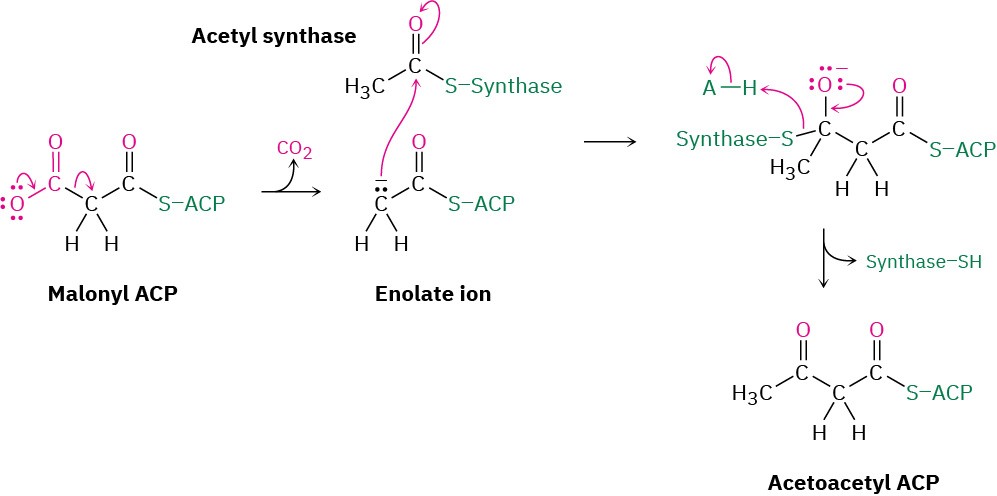Biological Aldol Reactions
Aldol reactions occur in many biological pathways but are particularly common in carbohydrate metabolism, where enzymes called aldolases catalyze the addition of a ketone enolate ion to an aldehyde. Aldolases occur in all organisms and are of two types. Type I aldolases occur primarily in animals and higher plants; type II aldolases occur primarily in fungi and bacteria. Both types catalyze the same kind of reaction, but type I aldolases operate through an enamine while type II aldolases require a metal ion (usually Zn2+) as a Lewis acid and operate through an enolate ion.
An example of an aldolase-catalyzed reaction occurs in glucose biosynthesis when dihydroxyacetone phosphate reacts with glyceraldehyde 3-phosphate to give fructose 1,6-bisphosphate. In animals and higher plants, dihydroxyacetone phosphate is first converted into an enamine by reaction with the –NH2 group on a lysine amino acid in the enzyme. The enamine then adds to glyceraldehyde 3-phosphate, and the iminium ion that results is hydrolyzed. In bacteria and fungi, the aldol reaction occurs directly, with the ketone carbonyl group of glyceraldehyde 3-phosphate complexed to a Zn2+ ion to make it a better acceptor.

Note that the aldolase-catalyzed reactions are mixed aldol reactions, which take place between two different partners, as opposed to the symmetrical aldol reactions between identical partners usually carried out in the laboratory. Mixed aldol reactions often give mixtures of products in the laboratory but are successful in living systems because of the selectivity of the enzyme catalysts.
Biological Claisen Condensations
Claisen condensations, like aldol reactions, also occur in a large number of biological pathways. In fatty-acid biosynthesis, for instance, an enolate ion generated by decarboxylation (Section 22.7) of malonyl ACP adds to the carbonyl group of another acyl group bonded through a thioester linkage to a synthase enzyme. The tetrahedral intermediate that results then expels the synthase, giving acetoacetyl ACP. (The abbreviation ACP stands for acyl carrier protein, which forms thioester bonds to acyl groups.)

Mixed Claisen condensations also occur frequently in living organisms, particularly in the pathway for fatty-acid biosynthesis that we’ll discuss in Section 29.4. Butyryl synthase, for instance, reacts with malonyl ACP in a mixed Claisen condensation to give 3-ketohexanoyl ACP.


